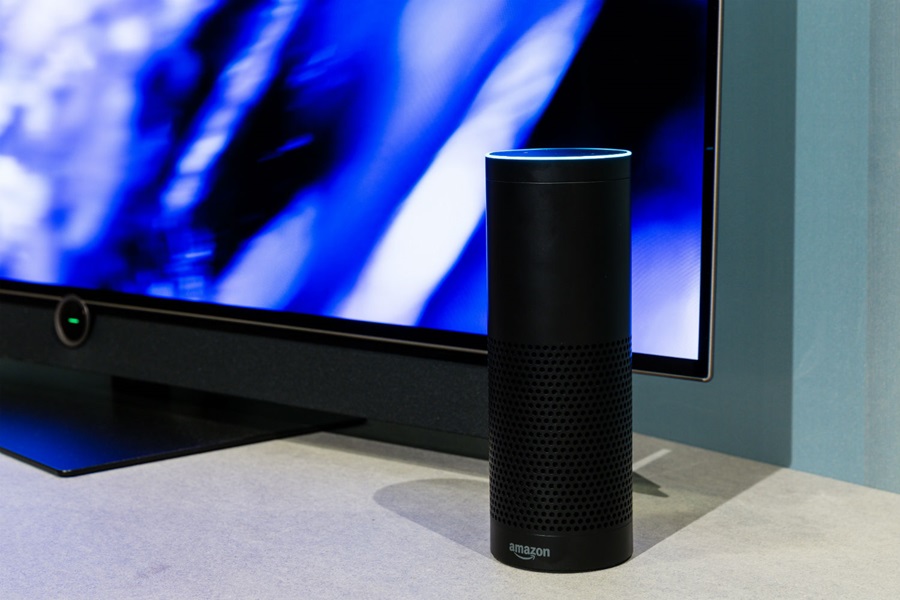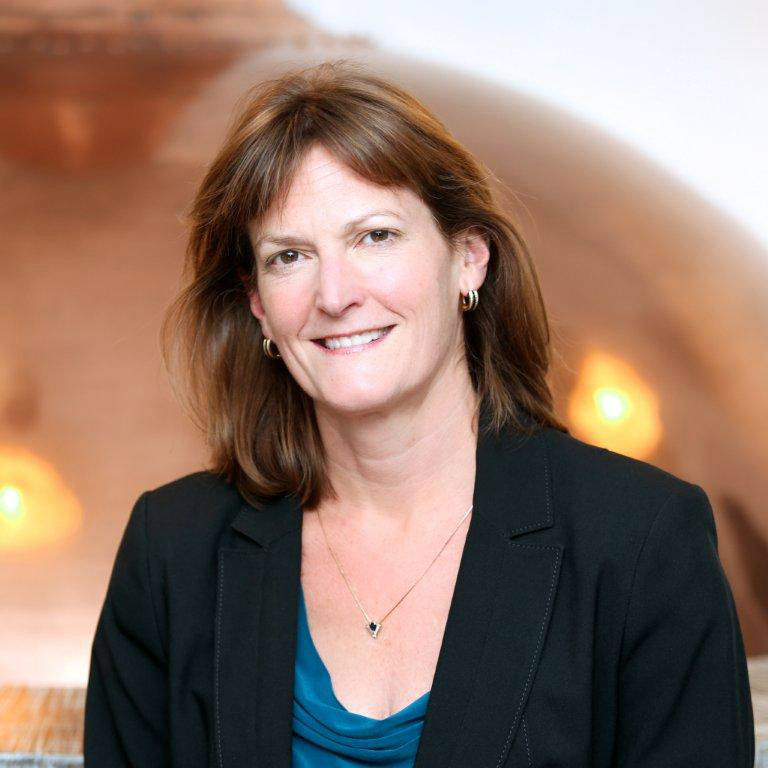This interview is an edited version of an episode of Future Proof, the marketing podcast from Saïd Business School, Oxford University, and Kantar. It is hosted by Andrew Stephen, the L’Oreal Professor of Marketing and Associate Dean of Research at the Saïd Business School, and Julie Kollman, Chief Research Officer for Kantar. In this episode Kantar’s Arpapat Boonrod (Nokki), CEO for Kantar’s Insights division in Thailand, discusses her ESOMAR-award-winning research into voice assistants.
Andrew: We are all well aware of the penetration of voice assistant devices, like the family of Amazon Echo devices, Google Home etc., into all facets of our lives and certainly into our living rooms and kitchens. The Echo Dot from Amazon, for example, was one of the top sellers for the holiday/Christmas trading period in 2017 in the US. A report by Kantar Consulting said that by December 2017, 18% of US households had a voice-operated speaker device in the house. And Kantar Consulting has also predicted that by 2021, 1.8 billion global consumers will be using voice speakers and voice-activated devices.
Julie: Our guest today is Arpapat Boonrad who is the CEO for Kantar TNS and Kantar Millward Brown in Thailand and we affectionately call her Nokki. Nokki has done some really interesting work looking into how consumers are interacting with voice technologies and what the future of these voice technologies might look like, focusing on Asia Pacific and particularly Thailand.
Based on all of the work that you’ve done, looking at the quantitative data and then the qualitative work that you’ve done about consumer’s interactions with voice technologies: What do you believe are the drivers of success for voice assistants?
Nokki: I think the main driver for the success of voice is that it fits naturally in people’s lives because it’s seamless and it’s very convenient. When you are using voice technology, you don’t need all the headsets or Google, like other devices, so it’s very easy and you can do tasks in your normal life – you can do many things at the same time. It’s a new technology but it’s easy to adopt – and it’s very fluid so it’s able to be used by brands in many ways. It can be in devices like Alexa, could be chatbot, voicebot or even in a robot. Japan is using that a lot, for example, where brands are providing services through robots, and using AI to understand their consumers’ needs, and the robot is able to respond to the different needs and able to communicate in different tones and moods to match users.
Another secret of success for voice is that it’s about human learning, because they accumulate data about us as a person. They know what we like and they can provide the right response, so people are drawn to using voice because it not only provides functional benefits but also emotional benefits from the human learning. It’s a device that seems to know you more than you know yourself. So apart from the obvious convenience, there’s also the emotional connection that voice seems to have.
Julie: Can you tell us a little bit more about that emotional connection, and what did you hear from consumers when you spoke to them? Because I think that is an aspect of voice technology that is under-explored to some degree in a lot of the marketing press today.
Nokki: The feeling people have when they are using voice technology… they don’t really feel like they are interacting with a machine, first of all, because of the way it was designed. It is witty, it’s smart – so people are not just using it for search, which is very obvious, but a lot of consumers in Asia and the Pacific use it like a friend or companion. They use it when they are bored, heartbroken, feeling down – and the responses, which are sometimes witty and funny, make them feel better. So there’s that emotional connection created because of how smart it is.
There is also a level of trust and reliance on voice technology. We asked: if your teacher and Siri tell you different things, who would you believe? People said they’d believe Siri because it’s efficient and accurate. But they still feel that the teacher has more experience and human understanding. So the usage of voice technology creates that kind of trust because of the accuracy of data that it’s providing to the consumer.
People also use it for entertainment. They ask their voice assistant to play music for them, to find a nice movie, a YouTube video for them that fits what they need.
Andrew: If I want to be a little bit of a devil’s advocate here and play the sceptic – is it really that easy to adopt? To get it to understand you correctly is a bit of a learning curve – have you got a sense from your research about that?
Nokki:When I say that it fits into people’s lives and is easy to adopt, it’s because people find it very convenient. It turns them into very fast typists! Because it’s easier to talk than to type and because it doesn’t require headsets or big goggles. So that’s what I mean about it being easy. But you’re right that the interface at the moment… with the technology, there are limitations. The limitation is in the technology not the voice itself. The voice is very powerful and people are ready to adopt it and they want to use it. But the barrier now is the technology being ready. Because from our research, the majority of people across Thailand, Singapore, Australia, China; they say that if voice technology works perfectly, it creates a magical feeling. And they want to use it because it is helping them a lot. So, you’re right, there are some glitches, but it’s mainly because of the ability of the technology rather than the feeling of the people towards voice.
Julie: From the conversations you’ve had, do consumers think of Siri as being the voice assistant, or do they think of it as Siri from Apple, or Alexa from Amazon? Are they relating Siri to the manufacturer, and Alexa to the manufacturer, or do they see it as distinct from that?
Nokki: No, I don’t think they see it as distinct from the brand or the device that they are using. They see it as one additional function that they are using. And they are seeing the benefits of it. Because at the moments that matter, Siri can be a hero for them. There was a case of a business woman and she’s about to go into a board meeting and she needs this piece of information right on the spot but her hands were full with documents… Siri helped her to find the information the second before she stepped into the boardroom.
Andrew: From a marketer’s perspective, what are some really good current uses that you’ve seen in your experience for these devices?
Nokki: I think there are many ways that a brand can use voice for the benefit of them finding growth. They have to start by understanding how voice technology can fit into their brand purpose. They can use voice technology to have brand identity – like a unique voice that reflects the personality of the brand; so it can be the voice of the brand. And they can use it to engage with consumers. Because right now, I think consumers don’t necessarily want to engage with brands, they want to engage with their friends, they want to engage with the content they are interested in, so it’s much more difficult for brands to find a unique relationship, and meaningful relationship with their consumers. I think that voice can help with that. Because voice is human-like, it can be created to fit the personality of the brand; to make the brand unique and stand out. It can also be used in products and services. For example, MG in Thailand providing voice activation within their car, but they are using the Thai language. In the past, people did not want to use voice technology in Thailand because they cannot speak English so well so they were not able to communicate to the devices very well.
Brands can also use it in terms of providing information about the brand. For example, they can put brand knowledge in Alexa and they can provide information to consumers. If they are a brand that produces cosmetics, they can provide information about how to do the best make-up.
Julie: What do you think are the potential pitfalls for brands suddenly needing to interact actually “verbally” with their consumers? It feels like if you choose the wrong voice that could be a danger for a brand, and how do you decide what the right voice is for your brand?
Nokki: The first thing that a brand needs to do is to identify their identity and position first. Because voice would not be any use to the brand if it contradicts the brand’s purpose or personality – it would do more bad than good. So the brand has to be very clear on what it stands for and position itself well and use the voice that reflects that. It’s very crucial. The thing that they need to do is they need to understand themselves and they need to understand their target consumer. Because having the right voice will lead to higher engagement but, if you have the wrong voice, it can definitely go the other way. So understand consumers, understand yourself and customise the voice that will fit you – would be the steps that brands need to be taking.
With voice technology right now we’ve identified that consumers are looking for voice technology that can customise towards their needs. Brands can learn from this. For example, our study shows that some people want voice technology to have different genders so it would fit in different occasions, the mood and the tone, the way words are pronounced; they want it to be customised because so far it has mostly catered to the style and need of people in the western world. Consumers here in Asia are looking for customisation – they’re looking for, for example, using a celebrity voice, having different moods or tones, having different accents. Brands can use this to find the right voice for their brands.
Andrew: I’m wondering: what the future of brand safety is in a voice-driven world? Because if these devices are speaking ‘as’ the brand, for the brand, and we’re relying on advanced artificial intelligence, then there’s always going to be scope for some problems.
Nokki: It can be a concern for brands. As per any tools or any technology, if it’s used in the right way, it’s beneficial, but if it’s not used in the right way, then it’s not. For brands, in terms of the course of technology and the speed of them to develop the technology, they would need to maybe collaborate with the other brands that already have the technology, like Apple and Amazon. Brands can also look at co-creating to find an alternative way to use the technology. Or, they can look at the existing technology but adapt and use it in a way that has a meaningful impact to the brand. I think voice is good but you need to use it in the right way; you need to understand how it will fit with the strategy and the thing that you want to achieve because often brands just rush towards using technology because it’s new. Because it’s exciting. But sometimes without understanding it and understanding how it fits their brand.
Editors notes
Future Proof: The marketing podcast from Saïd Business School, Oxford University, and Kantar, the marketing insights and consulting company.
In each episode, we’ll have a frank discussion with industry experts, to help brands and business leaders navigate the changing landscape of marketing… and hopefully dispel some myths and misconceptions along the way.
Listen to all the episodes wherever you get your podcasts.


